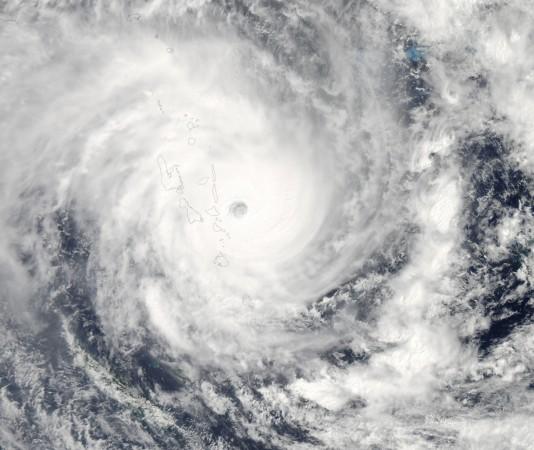
Winds of up to 250 kilometers an hour (155 mph) ripped metal roofs off houses and downed trees in the Pacific island nation of Vanuatu on Saturday, as relief agencies braced for a major rescue operation and unconfirmed reports said dozens had already died.
Witnesses described sea surges of up to eight meters (yards) and flooding throughout the capital Port Vila after the category 5 cyclone named Pam hit the country late on Friday.
Communications with the outside world were largely knocked out as high winds continued to batter the capital on Saturday. "It felt like the world was going to end," Alice Clements, a spokeswoman for the UN Children's Fund (UNICEF), told Reuters by cellphone from Port Vila.
"It's like a bomb has gone off in the center of the town. There is no power. There is no water.
"We are hearing unconfirmed reports of casualties and lots of wounded. We know that people are asking for help. Even in Port Vila there are still gale-force winds. There are unconfirmed reports of fatalities in Port Vila."
Clements said residents had the roofs ripped off their homes as they tried to shelter and then found themselves unable to move because of the strong winds. There were fears for thousands of children, with many of Vanuatu's 260,000 people living in buildings poorly equipped for such a massive storm.
The Vanuatu National Disaster Management Office had red alerts in place for several provinces.
U.N. relief workers were preparing to send in rapid response teams on Sunday, but with the airport closed and the storm still raging, it remained unclear whether they would be able to land.
Unconfirmed reports said that 44 people died in the country's outlying northeastern islands, the U.N. Office for the Coordination of Humanitarian Affairs (UNOCHA) said. Official figures from the Vanuatu government were not available and aid workers said mobile phone communication to the entire north had been interrupted.
Vanuatu's neighbors have also been affected, including Papua New Guinea and the Solomon Islands. Aid officials said at least one person had died in Papua New Guinea's outlying islands as a result of the storm, and many areas there also remained cut off.
U.N. officials warned that the death toll could be high, although it would be days at least before the true picture was known.
"We fear the worst," Sune Gudnitz, UNOCHA's regional head told Reuters from Fiji. "Vanuatu is a very vulnerable place because of its location in the middle of the ocean.
"It is possible that there will be a death toll that could be high. I can't give any numbers. I think it is a well grounded fear."
Officials with Care Australia, which has already launched an appeal for the victims, described a storm that was moving and abating only very slowly.
"It is still affecting significant parts of the country," said spokesman Tom Perry in Australia, after talking to the organization's Port Vila office by satellite phone.
Cyclone Pam is the most severe storm to hit the tiny Pacific island nation since 1987. Aid officials said it was comparable in strength to Typhoon Haiyan, which hit the Philippines in 2013 and killed more than 6,000 people.
At 9.00 p.m. ET on Saturday, the latest update from the Fiji Meteorological Service said the cyclone was currently moving slowly south.

















